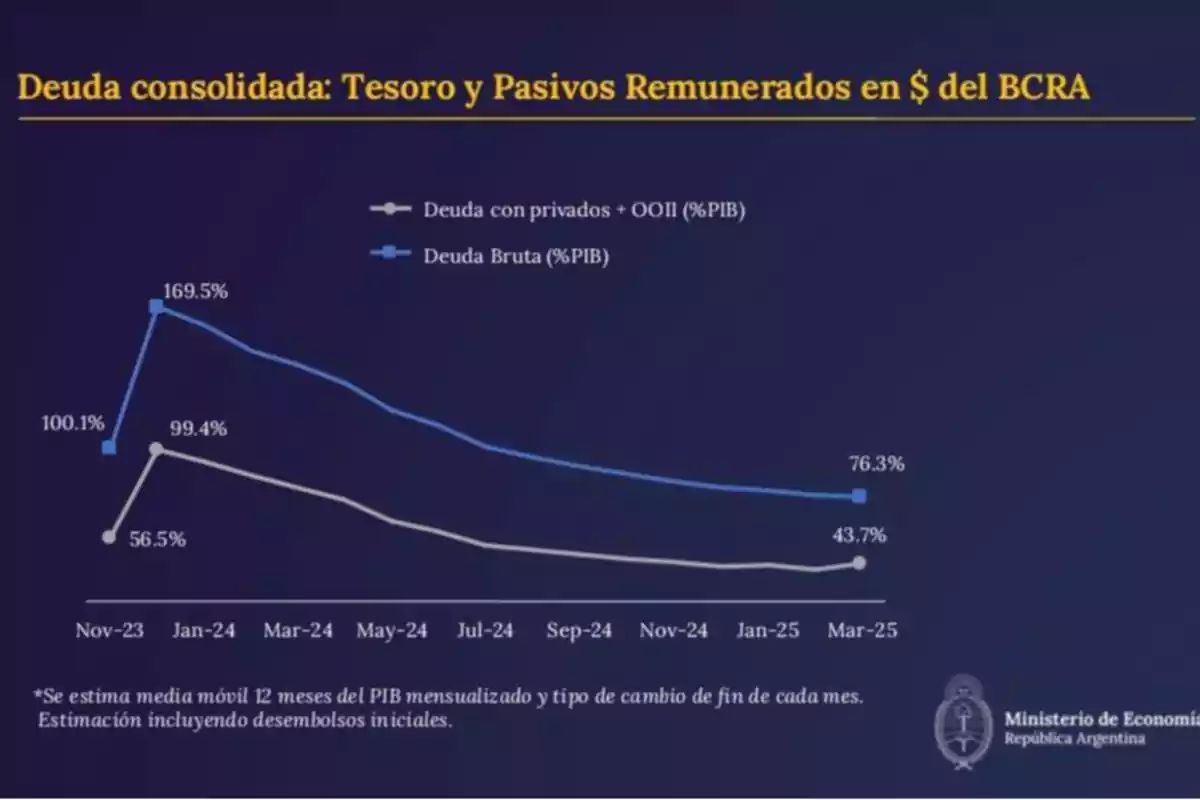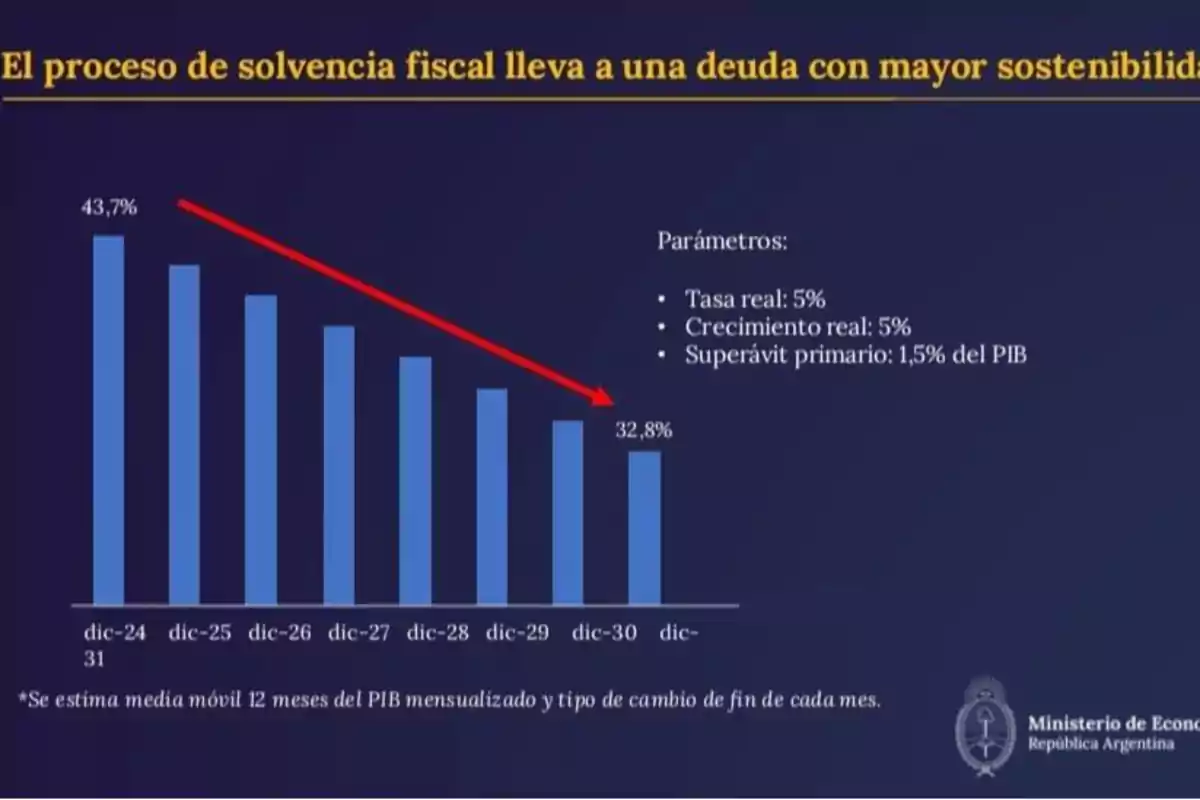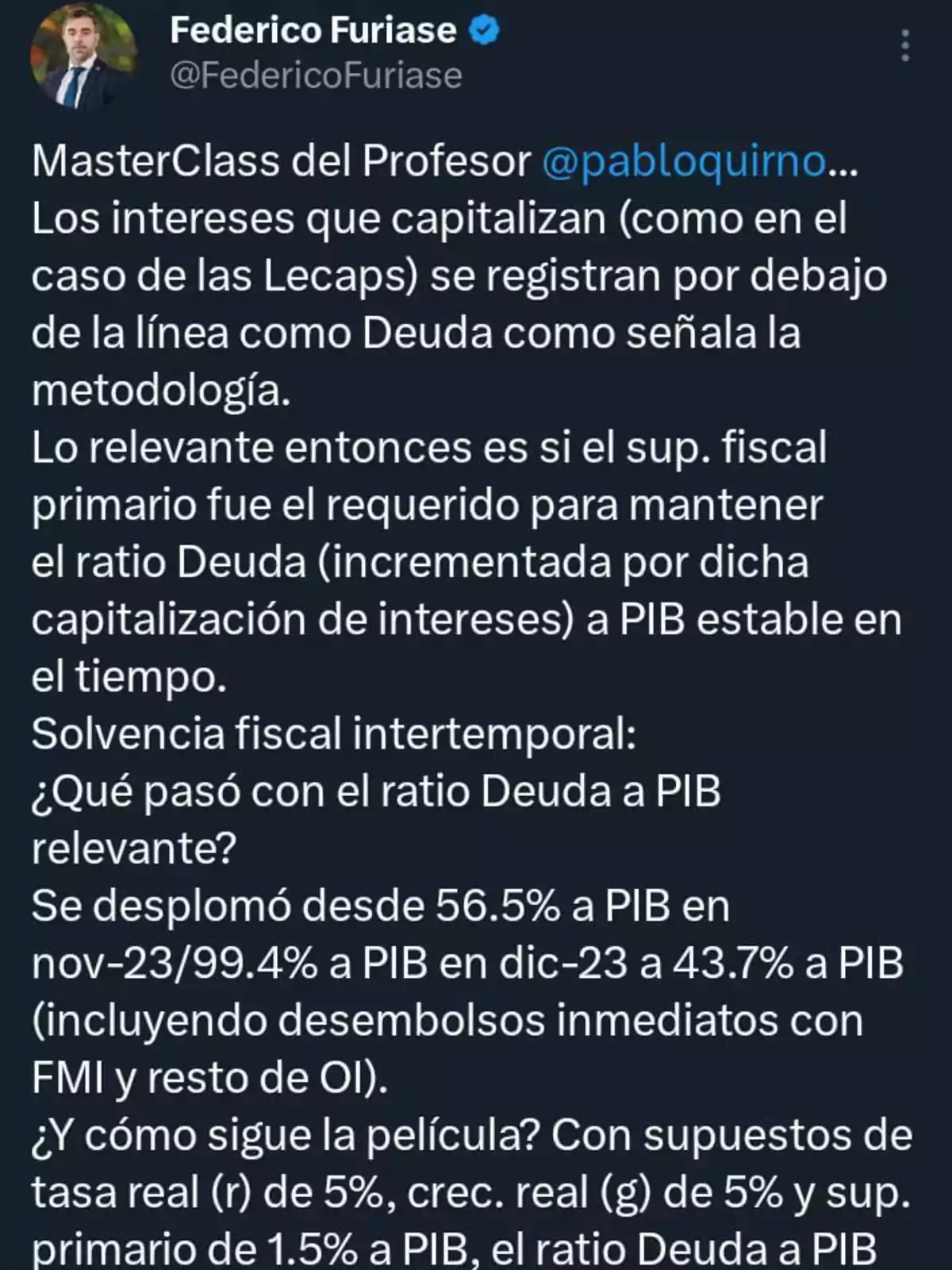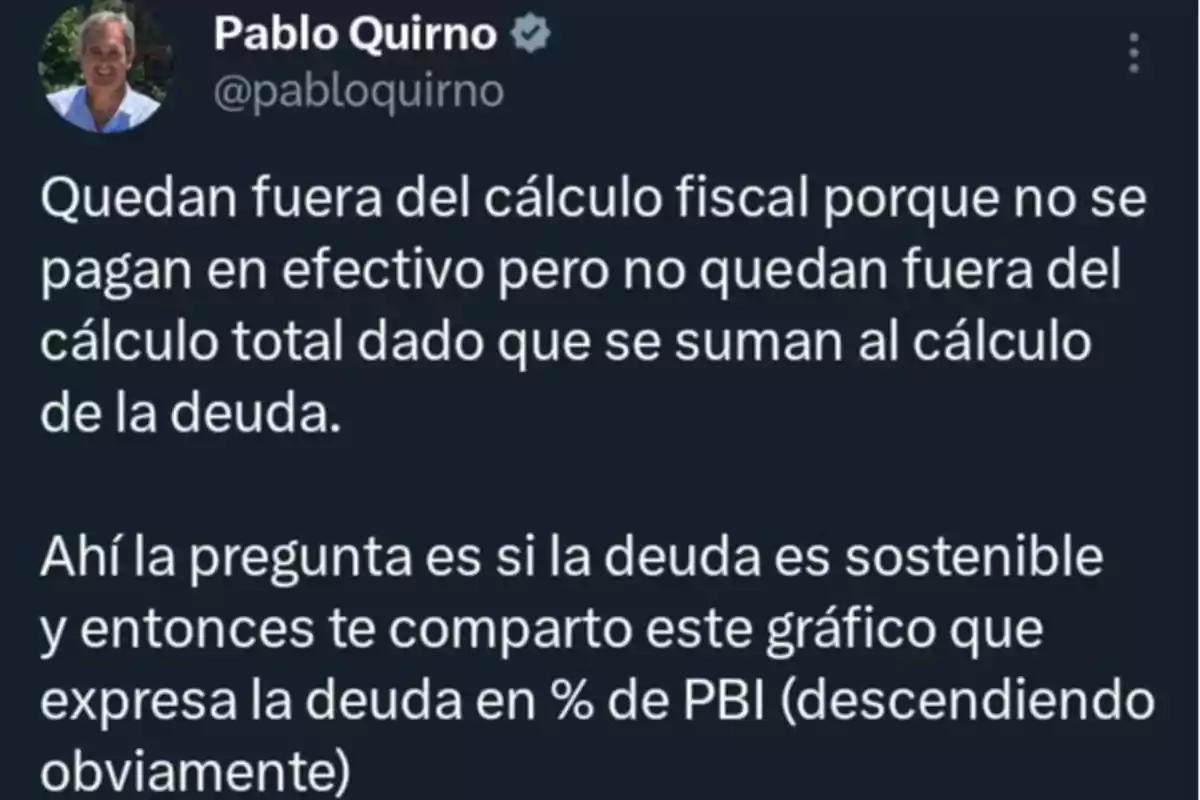
A path to fiscal sustainability through debt reduction
Milei's fiscal adjustment seeks stability by reducing debt and strengthening public accounts
Since his inauguration in December 2023, President Javier Milei has driven a radical shift in Argentina's economic policy. One of the central pillars of his program has been the pursuit of fiscal balance and the sustained reduction of the public debt burden. Unlike previous governments that opted for increased spending financed by issuance or borrowing, the Milei administration has proposed a diametrically opposed approach, betting on public spending adjustment, strong fiscal discipline, and monetary and financial consolidation.
The most recent figures from the Ministry of Economy reflect this change of course. It can be observed clearly how the fiscal sanitation process has had a direct impact on debt sustainability, both in terms of its magnitude and composition.
Consolidated debt: Treasury and remunerated liabilities of the BCRA
The following chart illustrates the evolution of gross debt and debt with private entities and international organizations (IOs), both expressed as a percentage of the Gross Domestic Product (GDP). In November 2023, just before Milei assumed the presidency, gross debt stood at 169.5% of GDP, while debt with private entities and IOs was at 56.5%.

In just four months of management, these figures dropped significantly: by March 2025, gross debt was reduced to 76.3% of GDP and debt with private entities and IOs to 43.7%. This decline is significant and reveals a structural change in fiscal and monetary policy. The reduction of remunerated liabilities of the BCRA, such as Leliqs and repos, has been key in this strategy, as these instruments constituted a growing source of future monetary issuance.
The consolidation of this trend is supported by three pillars: primary fiscal surplus, containment of public spending, and sanitation of the Central Bank's balance sheet. The reduced need for financing, a result of fiscal adjustment, allows for easing pressure on markets and restoring confidence.
Towards more sustainable debt
The chart shown below projects the future evolution of debt with private entities and IOs, based on a scenario of a primary fiscal surplus of 1.5% of GDP, a real growth rate of 5%, and a real interest rate also of 5%. Under these assumptions, the debt would progressively fall from 43.7% of GDP in December 2024 to 32.8% in December 2030.

This implies not only an improvement in long-term debt sustainability but also a lower country risk, an improved credit profile, and a potential return to voluntary financing in international markets. Argentina would leave behind its historical dependence on compulsive borrowing to enter a stage of lasting fiscal solvency.
It is worth noting that this process doesn't depend exclusively on increased revenue, but on genuine adjustment in public spending, accompanied by structural reforms aimed at shrinking the size of the State and strengthening the private sector.
Complementary analysis: contributions from Federico Furiase and Pablo Quirno
Federico Furiase highlighted on his X account (formerly Twitter) that capitalized interests, as in the case of LECAPs, are recorded below the line as debt, according to the official methodology. He emphasizes that what is relevant is whether the primary fiscal surplus is sufficient to stabilize the debt/GDP ratio over time, even including that capitalization of interests. Additionally, he presented a projection in which, with a real rate and growth of 5% and a primary surplus of 1.5% of GDP, the debt would be reduced from 43.7% to 32.8% of GDP in seven years.

Meanwhile, Pablo Quirno clarified that these capitalized interests are not paid in cash and therefore are not considered in the current fiscal calculation, although they are added to the total debt. He highlighted that the key is to evaluate debt sustainability, and he shared a chart showing the drop in gross debt from 169.5% of GDP to 76.3%, and debt with private entities and IOs from 56.5% to 43.7%, which demonstrates a clear downward trend.

More posts: